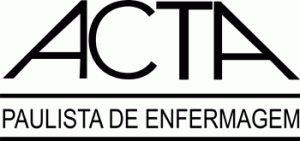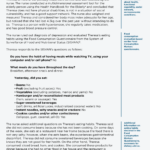By Fernanda Carneiro Mussi, PhD, Associate Professor IV; Escola de Enfermagem, Universidade Federal da Bahia, Coordinator of the Interdisciplinary Group for Cardiovascular Health Care. Salvador, BA, Brazil
The article was entitled as “Factors related to leisure physical inactivity in obese women” and was published in Acta Paulista de Enfermagem (Vol. 30, No. 3). The 143 women included in the study were users of the Unified Health System and were attended for treatment of obesity in a referral outpatient clinic in Salvador (BA). At the time, they were interviewed applying specific instruments and their weight and height were verified to calculate the body mass index (NASCIMENTO, et al., 2017).
A high proportion of physical inactivity during leisure time was detected using the International Questionnaire of Physical Activity, which allowed to identify 85.2% of women with associated diseases. Women with one or two diseases (such as high blood pressure, diabetes mellitus, and arthrosis) had an increase in physical inactivity (27% and 31%, respectively).
Another relevant finding was as follows: women who evaluated their own health state as being bad (28%) and regular (25%) were the most inactive.
In addition, they observed that self-efficacy, i.e., the belief in their own ability to perform a certain task (or deal with a specific situation) influenced their level of physical activity. In the study, Women with poor self-efficacy to practice physical activity were 27% the most inactive. Therefore, the belief in their own success for physical activity is essential to ensure that the activity is completed.
Although association between physical inactivity and environmental perception has not been strong, women with worse environmental perception where they lived were prone to increase physical inactivity during leisure time. This is an evidence that public safety, accessibility to public places suitable for sports activity, convenience stores, etc., influence the physical activity level (FLORINDO, et al., 2011; PITANGA, et al., 2014). Similarly, the tendency to increased physical inactivity was noticed in more obese women with people who depended on their care at home.
Regarding the benefits intended for physical activity in promoting and preventing health problems, these results will guide practices in health and nursing care, as well as public policies to support the practice of physical activity and body weight control, through interrelated actions involving health professionals, community, and public authorities.
This study is part of the ‘matrix research project “Remote nurse monitoring of overweight women”, coordinated by the professor Fernanda Carneiro Mussi, who received financial support from the National Council for Scientific and Technological Development (CNPq).
References
FLORINDO, A. A., et al. Perception of the environment and practice of physical activity by adults in a low socioeconomic area. Rev. Saúde Pública [online]. 2011, vol. 45, no. 2, pp. 302-310, ISSN: 1518-8787 [viewed 15 October 2017]. DOI: 10.1590/S0034-89102011000200009. Available from: http://ref.scielo.org/wk52vf
PITANGA, F. G., et al. Prevalence and social, demographic and environmental factors associated with leisure time and commuting physical activity in adults. Motri. [online]. 2014, vol. 10, no. 1, pp. 3-13, ISSN: 1646-107X [viewed 15 October 2017]. DOI: 10.6063/motricidade.10(1).1246. Available from: http://www.scielo.mec.pt/scielo.php?script=sci_arttext&pid=S1646-107X2014000100002&lng=pt&nrm=iso
To read the article, access it:
NASCIMENTO, T. S. Factors related to leisure-time physical inactivity in obese women. Acta paul. enferm. [online]. 2017, vol.30, no.3, pp. 308-315, ISSN: 1982-0194 [viewed 15 October 2017]. DOI: 10.1590/1982-0194201700047. Available from: http://ref.scielo.org/56c244
External link
Acta Paulista de Enfermagem – APE: <http://www.scielo.br/ape>
Como citar este post [ISO 690/2010]:


















Recent Comments